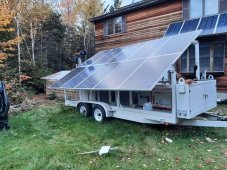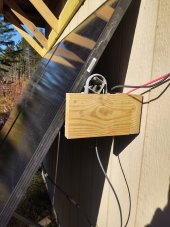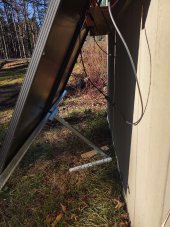iwasforcedtopickausername
New Member
- Joined
- Oct 13, 2022
- Messages
- 41
Up here, the ideal winter panel angle is about 70 degrees. 90 is not that far from it. I could have fairly consistent solar output year round with 90 degree (wall-mounted) panels. It seems like it'd keep the snow off them for sure. It's supposed to be about 70% of what an ideal angle would be for yearly production, but mounting would be so, so much cheaper and easier.
Is it worth it? Have any of you done it? I figure I can always remove from the exterior walls and do a ground mount if I need to.
(Roof mount is not a good option here. My pitch is not nearly appropriate and there's too much snow to get off the panels.)
Is it worth it? Have any of you done it? I figure I can always remove from the exterior walls and do a ground mount if I need to.
(Roof mount is not a good option here. My pitch is not nearly appropriate and there's too much snow to get off the panels.)






